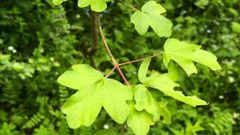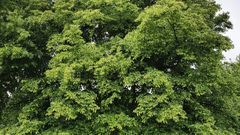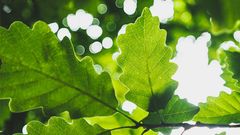

The natural range of Sitka spruce extends in a narrow strip along the west coast of North America from northern California to Alaska. Sitka Spruce is found up to 80 km inland and up to 500 m in elevation. In Europe, it has been introduced into regions with a marked oceanic climate.
Sitka Spruce grow well in acidic, poor and more or less hydromorphic soils ( regular saturation in water), where others tree species can't!
This thorny tree appreciates humid and temperate forests close to the ocean, and tolerates salt air fairly well. On the other hand, it does not grow beyond 500 meters of altitude. In France, it is mainly planted in Brittany, Normandy, Picardy, the Basque Country and in the Massif Central. However, it can also grow quite well near the sand dunes on th Northwestern Coast of Denmark. It requires a lot of light and atmospheric humidity. It needs 900 mm of water each year, with a minimum of 130 mm in summer. Sitka spruce therefore prefers cold and wind to summer droughts. It is thus able to live 700 years. It accepts the most diverse grounds. Its roots do well in acidic soils, without excess, aerated and well supplied with water.
Sitka spruce is a very important tree for the lumber industry . The performance of its wood is similar to that of Common Spruce, except that its heartwood is pinkish. We therefore use its wood in carpentry and stationery, but also to make the soundboard of certain musical instruments such as piano, harp, violin, and guitar. It is also used in archery, for the manufacture of arrows. For the construction of wooden aircraft structures, it serves as a benchmark structure.
This type of reforestation is however sometimes penalised by its rapid growth. Large rings lead to a significant drop in the density and mechanical properties of the wood. We prefer to use it in construction when it has fine rings. It is then a first choice wood.
The Sitka spruce, of which many of its popular traditions equate with the Fir, is the tree of birth . In ancient Greece, it is dedicated to Artemis, the moon goddess who presides over childbirth and protects women. The Germanic peoples used to collect pine cones, symbols of fertility. Planting a tree to celebrate new life is an original birth gift .
Planting a tree for the birth of a baby is a sustainable and symbolic gesture. For the child, like the tree, life begins: Over time, both will grow!
Our goal is to enable anyone to do something that benefits nature and helps us to live in a more harmonious world. So why not become a tree owner in a European forest and help combat climate change?






Please note that this is promotional communication. See our notice of information.